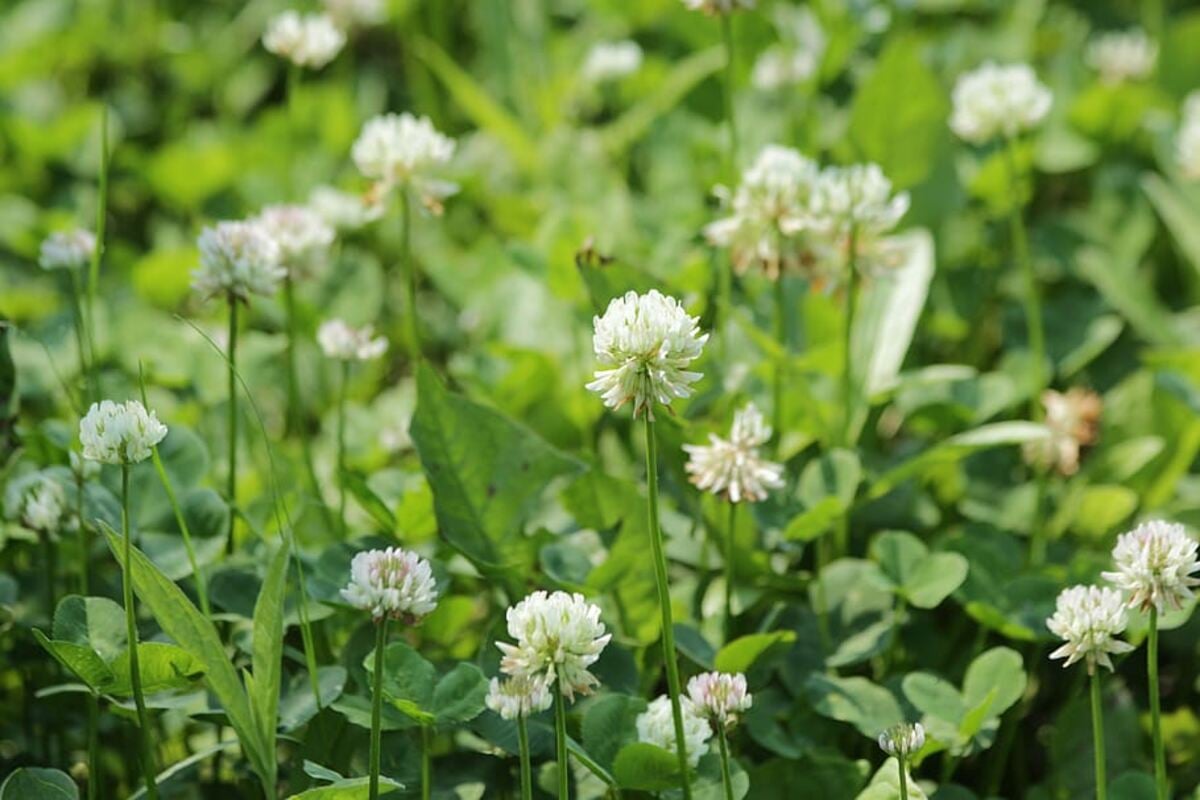
Virginia is the Mother of Presidents. It birthed eight presidents, was the home of four of the first five presidents, and was home to yet another. Are you the president of your lawn? Or do you need to know more about how to identify and control the common weeds in Virginia?
Here’s the weed-by-weed briefing that homeowners need to demand the respect you deserve from your lawn:
Broadleaf Weeds
Common Chickweed
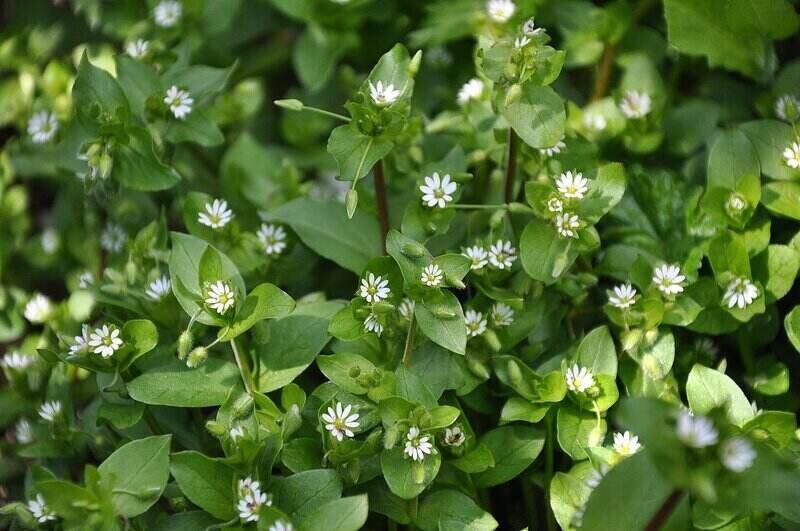
Called chickweed because chickens love it, this annual weed can outcompete lawn turfgrasses. It can grow up to 3-6 inches tall in the sun and up to 18 inches in the shade. Common chickweed tends to spread, making it look like a mat or patch.
Common chickweed leaves can be used as tasty greens in a salad. But it can also serve as a host plant for pests such as the Western tarnished plant bug and for diseases such as tomato spotted wilt virus.
Life cycle: Winter annual
Weed type: Broadleaf
Where it thrives: Temperate regions, in moist and fertile soils with shade and near-neutral pH.
How to identify common chickweed: Light green, short, fat, and pointed succulent leaves. White flowers have five petals, each split into two lobes so that each flower looks like it has 10 petals.
How to get rid of common chickweed: During its early stages, hand-weed or hoe. Isoxaben can be used to prevent it. Broadleaf herbicides will also work.
Dandelion
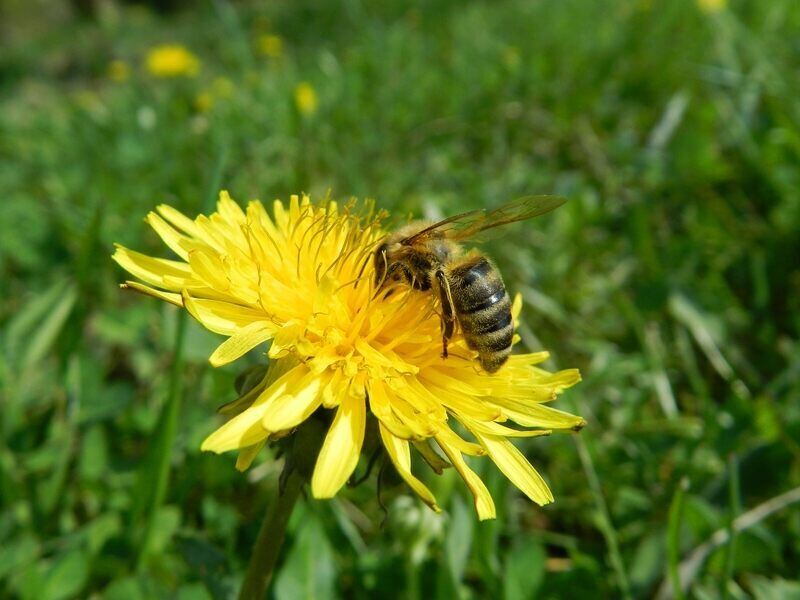
Named after this perennial weed’s serrated leaves, dent-de-lion or “tooth of the lion” belongs to the sunflower family. Once used as an herb and a medicinal plant, the dandelion has leaves, flowers, and root systems that can be used to make salads, beer, wine, and tea. Honeybees also use them as a food source in the spring.
Considered look-alikes, sow thistle, prickly lettuce, and red sorrel grow in warm weather. Dandelions grow mostly in cooler weather. Because their seed production is prolific and their seeds can blow in the wind, getting rid of dandelions can feel like an impossible task.
Life cycle: Perennial
Weed type: Broadleaf
Where it thrives: Irrigated turfgrasses, especially when frequently mowed. Grows best in moist areas in full sun. Once established, it can survive some shady, dry conditions.
How to identify dandelions: Deeply serrated leaves from 2-14 inches long and 0.5-3 inches wide cluster in a circle at the base. Long stalks have yellow flowers with small, strap-shaped petals. Seeds form the characteristic white puffball.
How to get rid of dandelions: Hard to control. Use tools to pull them out, but make sure to get the deep taproot or they grow back. Lawn herbicides containing triclopyr can be effective.
Hairy Bittercress
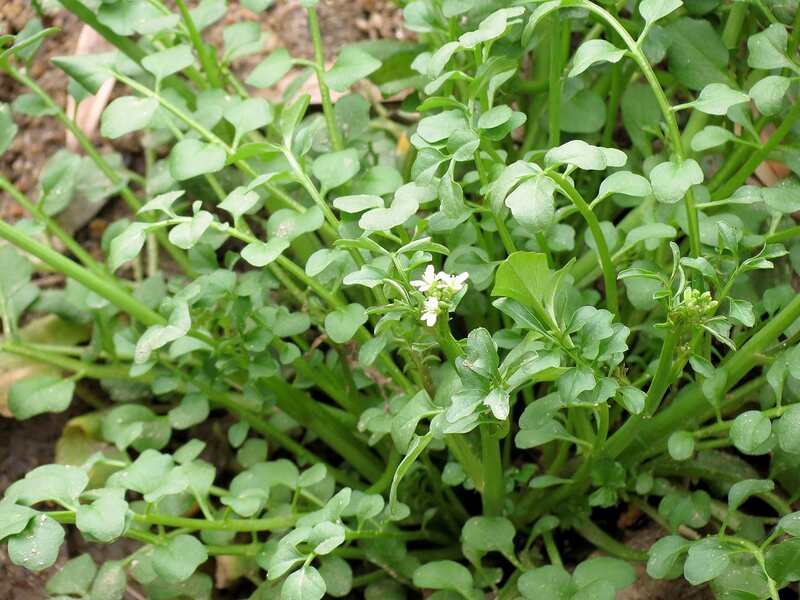
Some people substitute hairy bittercress for parsley when cooking. It tastes mild and peppery. The leaves can even be used in a salad. A member of the mustard family, hairy bittercress is also called flick weed, hoary bittercress, lamb’s cress, land cress, shot weed, and springcress.
The seeds of hairy bittercress look like purplish-green toothpicks that begin to coil. Then something — a breeze or a touch — triggers the toothpicks to explode and send the seeds as far as 3 feet away. In this way, plants or seeds can cause widespread infestation in a year.
Life cycle: Winter annual
Weed type: Broadleaf
Where it thrives: Moist soil, full sun, and shady areas.
How to identify hairy bittercress: Grows in a rosette, first with heart-shaped leaves larger at the base than the top and hairy on leaf tops. Branching stems 3-10 inches tall. Clusters of small, white flowers at the top of branches.
How to get rid of hairy bittercress: Prevent by managing fertility, improving surface drainage, and overseeding. Use a post-emergent herbicide in the spring or fall. Isoxaben can be used to prevent hairy bittercress but is expensive.
White Clover
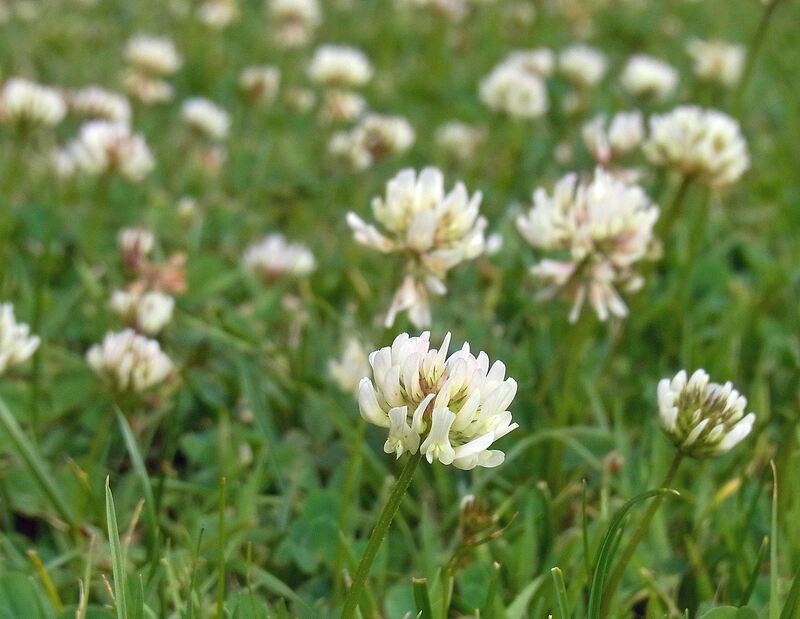
Often seeded in pastures but considered a weed in most lawns, white clover came to the U.S. with the colonists. In fact, Benjamin Franklin noted it as early as 1746. And Native Americans referred to white clover as “white man’s foot-grass” because it appeared with early settlers.
Before broadleaf herbicides, people in the 1950s valued white clover in lawn seed mixtures because of its ability to fix nitrogen, enrich the soil, and improve turfgrass growth. Some people argue that white clover should not be considered a lawn weed. One reason is that clover is important for pollinators.
Life cycle: Perennial
Weed type: Creeping legume and broadleaf weed
Where it thrives: Tolerates shade. Thrives in areas with fertile soil and good soil moisture. Does not tolerate high heat and drought.
How to identify white clover: Three elliptic leaflets form the leaves, which have small teeth along the edges and usually have light green or white bands near the base. The flowers are white or light pink and measure ½ to 1 ½ inches in diameter.
How to get rid of white clover: Mow high, amend soils to an appropriate pH, and adequately fertilize. Susceptible to many herbicides applied in the fall.
Corn Speedwell
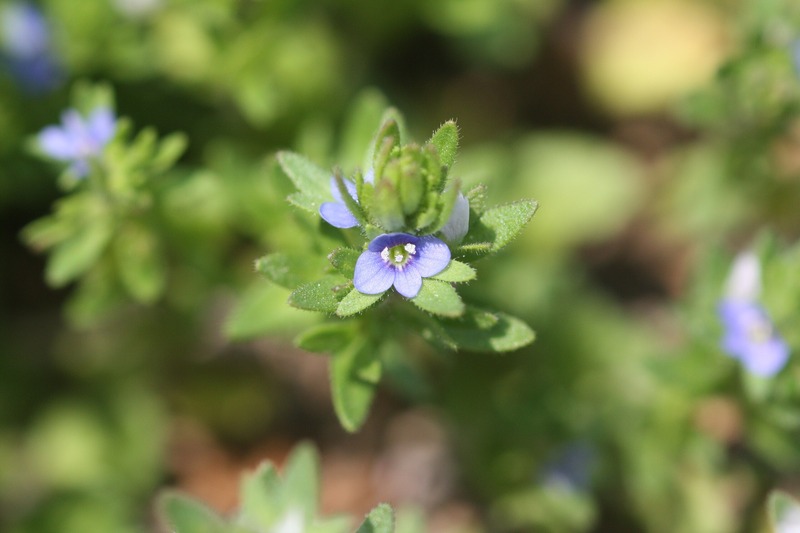
A member of the plantain family, corn speedwell germinates in the autumn or winter and grows when it is warm; these weeds typically stay dormant during the winter but can grow then if it’s warm enough. Growth and seed production resume in the spring, and the weed dies as temperatures increase.
Life cycle: Winter annual
Weed type: Broadleaf
Where it thrives: Anywhere, but likes full sun and dry, sandy, rocky, loamy, or clay soils and shade
How to identify corn speedwell: Lower leaves are larger and broader than upper leaves. Tiny, pale-blue to white flowers appear nestled within the leaves on the upper portion of the stem. Soft, fine hairs cover the stem and leaves.
How to get rid of corn speedwell: Prevent by providing a dense, vigorous turf. Control by hand-pulling or using a weeding tool. Can be suppressed with various pre-emergent and post-emergent herbicides.
Henbit

Native to Europe, western Asia, and northern Africa, henbit has become widespread in the U.S. Eaten raw or cooked in Europe and Asia, henbit’s leaves are rarely used as a salad green in the U.S. Honeybees and bumblebees use this weed for nectar and pollen.
Commonly confused with deadnettle and ground ivy, henbit produces 40-200 seeds per plant, and they can remain viable for 25-40 years. This weed spreads aggressively but dies during the hot summer months.
Life cycle: Winter annual
Weed type: Broadleaf
Where it thrives: Rich, fertile soils but can grow in lightly sandy soil too. Overly moist soil and shade. Likes weak, thin lawns.
How to identify henbit: This weed has sparse hair and greenish-purple, square stems. Its opposite leaves have toothed margins and prominent veins underneath. The petals of the tubular flowers have a reddish-purple hue with darker spots on the lower part.
How to get rid of henbit: Prevented with a dense, vigorous turf. Hand-pulling before they flower. Three-way herbicides may be used on several types of turfgrasses in Virginia to control henbit.
Broadleaf Plantain

Native to Europe and also called buckhorn plantain and rippleseed plantain, broadleaf plantain has been used as a cooking herb and in salads or smoothies, as well as a medicinal herb. Pedanius Dioscorides, a Greek botanist who lived from 40-90 AD, wrote about plantains, or “plantago,” in “De Materia Medica.”
Life cycle: Perennial
Weed type: Broadleaf
Where it thrives: Damp and compacted soil. Weak, thin turf. Full sun to partial shade.
How to identify broadleaf plantain: Oval, veined leaves with short stems form rosettes with a diameter of 6-12 inches that stay close to the ground. Leaves may grow to 6 by 4 inches. Pale green flowers appear on slender spikes approximately 8 inches long. Flowering stalks lack leaves.
How to get rid of broadleaf plantain: Prevent by using good lawn care techniques, such as overseeding thin turf. Hand-pulling or digging out young plants year after year. Can also be controlled with chemicals in the spring and fall.
Spotted Spurge

Spotted spurge is a low-growing (prostrate) weed that grows in a somewhat radial pattern. Also known as spotted sandmat, milk purslane, milk spurge, and spotted pusley, spotted spurge reproduces from seeds that can survive several years. Spurge decreases the condition of your turf and can be a habitat for insects. In fact, its seeds attract ants.
Toxic to some animals and to humans, spotted spurge sap can cause skin, eye, and mouth irritation, as well as nausea or vomiting if ingested. It can be confused with prostrate spurge, which does not have the tell-tale maroon blotch on its leaves.
Life cycle: Summer annual
Weed type: Broadleaf
Where it thrives: Full sun, well-drained soil. A variety of soils, including highly compacted soils, clay, sand, and shallow, rocky areas. Poorly maintained lawns.
How to identify spotted spurge: A mat of multibranched stems living close to the ground grows 1-2 inches by 3 feet. Opposite, gray-green, oval leaves that have maroon blotches form on pinkish, hairy stems and are about ⅓ inch long. Spurges have a milky sap that oozes when stems and leaves are cut. It has tiny, greenish-white flowers.
How to get rid of spotted spurge: Prevent by maintaining a healthy lawn. Easy to pull by the single taproot, but do so with gloves because it can irritate the eyes and skin. Use pre-emergent and post-emergent herbicides. Use solarization or mulch for spurge invasions in garden beds.
Ground Ivy

Also known as creeping Charlie, creeping Jenny, and gill-over-the-ground, ground ivy is a sprawling, difficult-to-control weed. It’s native to Europe, and early settlers brought it to the U.S. as a medicinal plant.
Ground ivy spreads up to 30 inches wide, attaching to the ground by establishing roots wherever leaves attach to stems. This weed smells minty when crushed or mowed and can be confused with henbit and purple deadnettle. It can remain green throughout the winter.
Life cycle: Perennial
Weed type: Broadleaf
Where it thrives: Damp, shady areas but can tolerate full sun.
How to identify ground ivy: Round or kidney-shaped leaves have large, scalloped teeth; veins stem from a single point. Creeping square stems are usually hairless but can have short, stiff, backward-facing hairs. Tube-shaped, blue-violet flowers grow to about ⅓ inch long.
How to get rid of ground ivy: Prevent by engaging in appropriate turfgrass maintenance, including proper lawn mowing, and pruning back shade. A common method of chemical control is to apply the herbicide triclopyr in the fall.
Wild Violet

Not considered a weed by some, who consider it a delicate, pretty addition to their lawns, wild violet is difficult to control because:
- It twists and curls its foliage away from most post-emergent herbicides.
- It can recover from herbicides during most of the growing season.
- It has strong recuperative potential because it aggressively spreads via rhizomes that serve as structures for food storage and overwintering.
The flowers can be used in salads and, if enough are picked, can even flavor vinegar and syrup. Wild violet leaves can be eaten in salads, in soups, or as cooked greens. The Ojibwe tribe in the northern Midwest and lower Canada would steep the flowers in hot water overnight and then mix the water with snow to make a sort of snow cone.
Life cycle: Perennial
Weed type: Broadleaf
Where it thrives: Moist, fertile soil and full sun but mostly in shaded areas.
How to identify wild violet: Low-growing rosettes of serrated, heart-shaped leaves reach 3 ½ inches long. Flowers can be purple, violet, blue, or white and are approximately ½-¾ inch long with five petals; two petals produce white hairs at their bases.
How to get rid of wild violet: Prevent by pruning trees and shrubs to favor grass and engaging in good lawn care practices, including aeration in compacted soils. Resistant to many herbicides, but according to Penn State, those containing triclopyr provide the best control with repeated application, especially in the fall and over multiple years.
Purple Deadnettle

A member of the mint family, purple deadnettle produces more than 27,000 seeds per plant, each of which can result in plants reaching 16-18 inches high. This weed has no sting, despite the name, and it can be confused with henbit. Native to Eurasia, purple deadnettle has appeared in books on wildflowers.
Life cycle: Winter annual
Weed type: Broadleaf
Where it thrives: In nutrient-rich loamy or sandy-loam soils. Full sun to moderate shade.
How to identify purple deadnettle: Hairy, triangular, purple/bronze leaves have points at the tip and have rounded to pointed teeth from square stems. Lower leaves have long stems, but short stems bear upper leaves. There are small, two-lipped, pink to purple tubular flowers with purple splotches on the inside of the petals.
How to get rid of purple deadnettle: Prevent by cultivating a vigorous, healthy lawn, including dethatching grasses like Bermuda, Zoysia, or St. Augustine. Hand-pull in small patches after rain. In large areas, use a pre-emergent herbicide in the fall and a post-emergent herbicide on actively growing weeds.
Grassy Weeds
Crabgrass

Although crabgrass is a member of the grass family, it has become problematic in lawns. In fact, fighting crabgrass is an ongoing battle. It’s ironic that, in 1849, the U.S. Patent Office introduced it into the U.S. as a forage crop. However, it spread nationwide and is now considered a weed.
Native to Europe or Eurasia, crabgrass is considered the number one pest in lawns worldwide. This warm-season grass has an advantage over cool-season lawn grasses (e.g., fescues, bluegrasses, ryegrasses) and can go toe-to-toe with perennial warm-season grasses (e.g., Bermudagrass, Zoysiagrass). To learn more, check out Why Is Crabgrass Bad for the Lawn?
Life cycle: Warm-season annual
Weed type: Grass
Where it thrives: Found in almost every turf and landscape situation.
How to identify crabgrass: Very noticeable against dark-green turfgrass. The stems are branched. Tinged light purple with a white strip down the center, leaves measure ⅖-½ inch wide and ⅓-1 inch long and have shiny hair.
How to get rid of crabgrass: Maintain dense turf and overseed to avoid a sparse lawn. Apply pre-emergent herbicides before crabgrass emerges in spring. When soil temps are about 50-55 degrees, it’s time to apply the pre-emergent.
Annual Bluegrass

Originally from Europe but found worldwide, annual bluegrass germinates in the late summer or early fall. Seedlings survive the winter in a vegetative state, and the plant flowers and produces seed in late spring and early summer and then dies. One plant can produce more than 360 viable seeds that can survive many years.
Perhaps the most important thing about annual bluegrass, often called poa or Poa annua, is how to differentiate this weed from the turfgrass Kentucky bluegrass:
- Annual bluegrass has a lighter lime-green color than Kentucky bluegrass.
- Annual bluegrass is especially noticeable in May and June because of its prolific seed head production.
- Annual bluegrass often dies during summer heat and drought, leaving behind a lackluster lawn.
- Annual bluegrass has a ligule, or a long, membranous appendage at the base of the leaf blade; the ligule is short or absent in Kentucky bluegrass.
Life cycle: Winter annual
Weed type: Grass
Where it thrives: Lawns cut short and that have high levels of nitrogen and areas with low soil pH, compaction, poor drainage, and/or shade. Turf fertilized at improper times and provided light water frequently. Cool, humid conditions.
How to identify annual bluegrass: Creased, light-green leaves are narrow with pronounced middle veins and have a boat shape at the tips. In the shape of pyramids, white seed heads develop on short stalks.
How to get rid of annual bluegrass: Prevent with a properly maintained lawn. Use pre-emergent herbicides to control large infestations of annual bluegrass in late summer or early fall as long as you aren’t planning to overseed a cool-season lawn. Post-emergent herbicides should be applied by a lawn care professional.
FAQ
Of course, other weeds have invaded Virginia. Some of these other weeds include the following:
● Dallisgrass
● Indian goosegrass
● Nutsedge
● Oxalis
● Virginia buttonweed
● Wild garlic
● Wild onion
● Woodsorrel
The term noxious weed means any plant that could be “detrimental to crops, surface waters,…other desirable plants, livestock, land, or…to public health, the environment, or the economy.”
According to Virginia’s administrative code, Virginia has three tiers of noxious weeds. The first tier of weed likely isn’t present in the state; giant salvinia, tropical soda apple, and giant hogweed make up this list.
In Tier 2, the weed has been found in the state but may be able to be eradicated. Second-tier weeds include the following:
● Cogon grass
● Purple loosestrife
● Water spinach
● Beach vitex
● Wavyleaf basketgrass
● Incised fumewort
In the third tier, eradication isn’t feasible, but they’re certainly going to try. This third list follows:
● Tree of heaven
● Porcelain berry
● Oriental bittersweet
● Hydrilla
● Mile-a-minute weed
Besides hand-pulling or using a tool to pull weeds, there isn’t a whole lot you can do to get rid of weeds once you have them. But if you don’t want to go the chemical route, don’t worry. There is another way to battle these brutes without having to resort to synthetic chemicals.
You can use corn gluten meal, a by-product of corn processing. This meal is used as a fertilizer, but Iowa State University turfgrass researcher Dr. Nick Christians noticed fewer weeds on test plots where corn gluten meal was used. It’s not a complete miracle, though. It costs more than, and doesn’t provide as much weed control as, synthetic herbicides.
Call the Pros
Are you the commander in chief of your lawn? Or have weeds voted you out? To vote out your weeds instead, call a Virginia yard care professional near you. We have trusted lawn care pros in Virginia Beach, Chesapeake, Norfolk, Arlington, Richmond, Newport News, and other areas around the state.
Additional sources:
Main Image Credit: Pxfuel